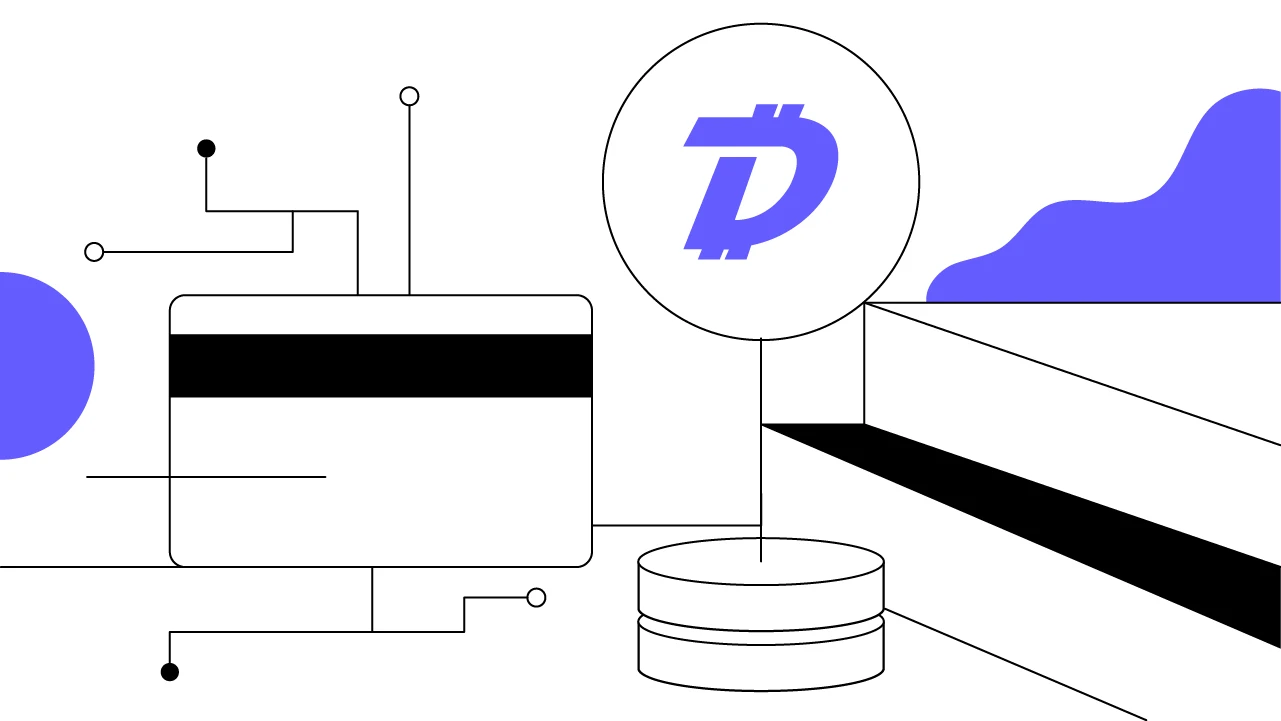Contents
Frax (FRAX): A New Kind of Stablecoin
Frax has designed a stablecoin protocol backed by both asset collateralization and mathematical cryptographic algorithms.
Updated October 23, 2023 • 4 min read

Summary
Instead of simply functioning as a specialized stablecoin, Frax aims to serve as a decentralized finance (DeFi) money market that makes use of several distinct mechanisms. These include minting and redeeming the FRAX stablecoin as well as staking by providing liquidity provider (LP) tokens to various trading pairs on Uniswap. The Frax crypto protocol makes use of two distinct assets: the Frax (FRAX) stablecoin, which is pegged 1:1 to the U.S. dollar, and the Frax Shares (FXS) governance and utility token.
Asset-Backed Stablecoins
The majority of stablecoin protocols in crypto are built on a tokenomic model that leverages fully-backed asset collateralization. For every stablecoin on such a network — DAI, USDC, and GUSD, for example — there must be an equivalent amount of fiat currency or other assets in the providing platform’s custody. This provides a 1:1 backing for every asset-backed stablecoin released on their respective platforms. While this method has proven to be largely effective, some critics argue that collateralized stablecoins of this kind might be susceptible to custodial risks and may require on-chain overcollateralization. In other words, users must put up more than they are borrowing from the protocol, and the extra funds from this overcollateralization are used as insurance for maintaining price equilibrium in case an asset loses its 1:1 price peg.
Algorithmic Stablecoins
Algorithmic stablecoins represent a wholly different tokenomic methodology in regards to maintaining a stable price peg. These platforms produce cryptocurrencies that aim to maintain a peg to stable assets through mathematical algorithms instead of collateralization. Typically, algorithmic stablecoins aim to achieve this through automated monetary policies that manage the supply of a coin and affect the value of the coin in relation to its pegged asset. For the most part, algorithmic stablecoin models have proven difficult to bootstrap, are slow to gain adoption, and are often characterized by more volatility than you might expect from something called a stablecoin. While some remain optimistic about the future of algorithmic stablecoins, such challenges have undermined market confidence in purely algorithmic stablecoins as a viable long-term stable asset.
What Is Frax?
The Frax crypto project is amongst the first to have a stablecoin that utilizes characteristics from both collateralized and algorithmic models: FRAX token. The project intends its token to function as “scalable, trustless, stable, and on-chain money.” The Frax crypto protocol utilizes two different assets: the Frax (FRAX) stablecoin (which is built to maintain a peg to $1 USD), and the Frax Shares (FXS) governance and utility token (which is used to support the platform’s various functions).
FXS Governance and the Frax Crypto Protocol’s Utility Token Uses
The Frax crypto platform relies upon its native FXS token for several purposes: governance, staking, and the minting of FRAX tokens. In regards to protocol governance, FXS is used to grant token holders voting rights that allow them to adjust the specific rules of existing collateral pools, as well as to potentially add new pools and asset types to be used within the protocol. FXS voters also have a say in the adjustment for specific types of protocol fees and the power to change the collateral ratio used within the protocol. Finally, as we will discuss below, FXS is distributed to users who contribute liquidity to different types of Frax-based Uniswap liquidity pools.
How FRAX Tokens Are Minted
The Frax minting and redeeming mechanism is key to maintaining FRAX token’s stable peg to USDC. FRAX U.S. dollar stablecoins can be minted by any user who supplies not only collateral tokens (currently USDC stablecoins) but also governance tokens (FXS, the protocol’s native governance tokens). The percentage proportions of each token are given by the Frax collateral ratio (CR). For instance, a 50% collateral ratio means that one dollar worth of FRAX can be minted by providing $0.50 USDC and $0.50 worth of FXS. This mechanism works in reverse when a user chooses to redeem their FRAX for the USDC and FXS they initially provided. In this case, again with a 50% collateral ratio, a user is given $0.50 USDC and $0.50 of FXS in exchange for every FRAX stablecoin they provided.
When new FRAX stablecoins are minted, FXS is burned proportionally to the uncollateralized amount. If we use the previous example’s collateralization ratio of 50%, for every FRAX token minted, $0.50 of FXS is burnt. This means that by minting more FRAX, the circulating quantity of FXS is reduced. Additionally, when the protocol lowers the collateralization ratio, an increased number of FXS are burnt for a given amount of FRAX, which in turn creates buy pressure for FXS.
Conversely, a constant flow of FXS is minted and distributed between numerous liquidity providers, in turn expanding the circulating supply and exerting downward price pressure. At the same time, as usage and adoption increase, more FRAX tokens are supposed to be minted than redeemed, resulting in substantial amounts of FXS being burnt and removed from circulation. Therefore, if the circulating supply of FRAX increases sufficiently, the discrepancy between supply and demand for FXS is meant to foster a resilient tokenomic model for FXS that is meant to ensure price stability for FRAX.
Liquidity Pools, Rewards and Staking Frax Tokens
Liquidity pools: The Frax protocol also allows users to earn rewards in the FXS token by contributing liquidity to numerous Uniswap pools. The liquidity provided by these pools makes FRAX tokens more easily tradeable across the decentralized ecosystem, thus further strengthening the token’s peg and usability. The protocol mints and distributes FXS by adding liquidity to token pairs on Uniswap including the FRAX/USDC, FRAX/FXS, and FRAX/wETH pools. There are also currently similar mechanisms set up for various trading pairs on the Curve, Polygon, and SushiSwap blockchains, as well as on Binance Smart Chain (BSC) via PancakeSwap, and Fantom via SpiritSwap.
Long-term time-locked staking: On Frax, liquidity providers (LPs) are able to lock their LP tokens into the protocol for up to 3 years. The amount of rewards liquidity providers accrue is determined by two boost factors: the amount of time the asset is locked for, and the collateral ratio. The time locked boost means that the longer the user locks their tokens into Frax, the higher their rewards will be; the collateral ratio boost is in direct proportion to the base emission rate of FXS, meaning that an increase in this metric should result in more distributed FXS across the entire ecosystem.
Cryptopedia does not guarantee the reliability of the Site content and shall not be held liable for any errors, omissions, or inaccuracies. The opinions and views expressed in any Cryptopedia article are solely those of the author(s) and do not reflect the opinions of Gemini or its management. The information provided on the Site is for informational purposes only, and it does not constitute an endorsement of any of the products and services discussed or investment, financial, or trading advice. A qualified professional should be consulted prior to making financial decisions. Please visit our Cryptopedia Site Policy to learn more.

Is this article helpful?


